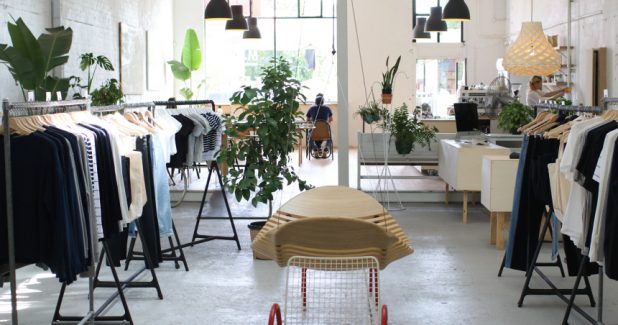Sustainable Fashion: A Path Towards a Greener Future
Apparel / / Jun 07, 2023

Sustainable fashion has emerged as a powerful movement in the fashion industry, driven by the need to address the environmental and social challenges posed by traditional fashion practices. With concerns over climate change, resource depletion, and unethical labor practices, consumers and industry leaders are seeking ways to create a greener and more responsible fashion landscape. In this article, we will explore the concept of sustainable fashion, its significance in combating environmental issues, its impact on the fashion industry, and the steps being taken to achieve a more sustainable future.
Understanding Sustainable Fashion
Sustainable fashion, also known as eco-fashion or ethical fashion, is a holistic approach to clothing design, production, and consumption that considers the entire lifecycle of a garment. It focuses on minimizing negative environmental and social impacts while maximizing positive contributions to the planet and its inhabitants. Sustainable fashion encompasses various principles:
1. Ethical Sourcing: Sustainable fashion prioritizes the use of materials that are ethically sourced, ensuring fair wages and safe working conditions for garment workers.
2. Eco-friendly Materials: It promotes the use of eco-friendly materials such as organic cotton, hemp, Tencel, and recycled fibers to reduce environmental impact.
3. Waste Reduction: Sustainable fashion aims to minimize waste by utilizing zero-waste design techniques, recycling, and upcycling.
4. Slow Fashion: Embracing the concept of slow fashion, sustainable brands encourage consumers to buy less and invest in high-quality, durable pieces that last longer.
5. Circular Economy: Sustainable fashion seeks to create a circular economy where products are designed for reuse, remanufacturing, and recycling.
The Significance of Sustainable Fashion
Sustainable fashion addresses some of the most pressing challenges faced by the fashion industry and the planet:
1. Environmental Impact: The fashion industry is known for its high water consumption, chemical pollution, and vast amounts of textile waste. Sustainable practices help reduce these environmental footprints.
2. Resource Depletion: Conventional fashion relies heavily on non-renewable resources like petroleum-based synthetic fibers. Sustainable alternatives reduce resource depletion and promote the use of renewable materials.
3. Labor Exploitation: Unethical labor practices are prevalent in many parts of the fashion supply chain. Sustainable fashion aims to ensure fair treatment and proper working conditions for garment workers.
4. Consumer Awareness: Sustainable fashion fosters consumer awareness about the environmental and social impact of clothing choices, encouraging conscious consumption.
Sustainable Fashion in the Fashion Industry
Sustainable fashion has gained significant traction in the fashion industry in recent years:
1. Emergence of Sustainable Brands: A growing number of sustainable fashion brands are emerging, offering eco-friendly and ethical alternatives to conventional fashion.
2. Collaboration and Advocacy: Fashion industry leaders, NGOs, and government organizations are collaborating to promote sustainable practices and advocate for positive change.
3. Eco-conscious Designers: Established fashion designers are incorporating sustainable practices into their collections, raising awareness about eco-friendly options.
4. Green Innovations: The industry is witnessing the rise of green innovations, such as waterless dyeing, biodegradable fabrics, and circular fashion initiatives.
Consumer Role in Driving Sustainable Fashion
As consumers become more aware of the impact of their choices, they play a crucial role in driving sustainable fashion:
1. Conscious Consumption: Consumers are making more informed choices, favoring brands with transparent and ethical practices.
2. Support for Sustainable Brands: By supporting sustainable brands, consumers drive market demand for eco-friendly products.
3. Second-hand Shopping: Thrifting and second-hand shopping are becoming popular, contributing to waste reduction.
4. Clothing Care: Proper clothing care, such as washing in cold water and air-drying, prolongs the life of garments and reduces environmental impact.
Challenges and Future Outlook
Despite progress, sustainable fashion faces some challenges:
1. High Costs: Sustainable materials and ethical practices can lead to higher production costs, which may be a barrier for some consumers.
2. Mass Production: The fast fashion model continues to dominate the industry, leading to overproduction and waste.
To overcome these challenges, collaboration between industry stakeholders, governments, and consumers is essential. The future of sustainable fashion relies on:
1. Innovation: Continued research and innovation in sustainable materials and manufacturing processes.
2. Education: Promoting education and awareness about sustainable fashion and its benefits.
3. Regulation: Implementing policies and regulations to promote sustainable practices and hold the industry accountable.
Sustainable fashion is more than just a passing trend; it is a transformative movement with the potential to create a greener and more ethical fashion industry. By embracing eco-friendly materials, ethical sourcing, and circular economy principles, sustainable fashion is steering the industry towards a more responsible future. The collective efforts of consumers, brands, and industry leaders can drive positive change and make sustainable fashion the norm rather than the exception. As we move forward, let us continue to support sustainable practices and make conscious choices that contribute to a greener and more compassionate world.













Comments 0